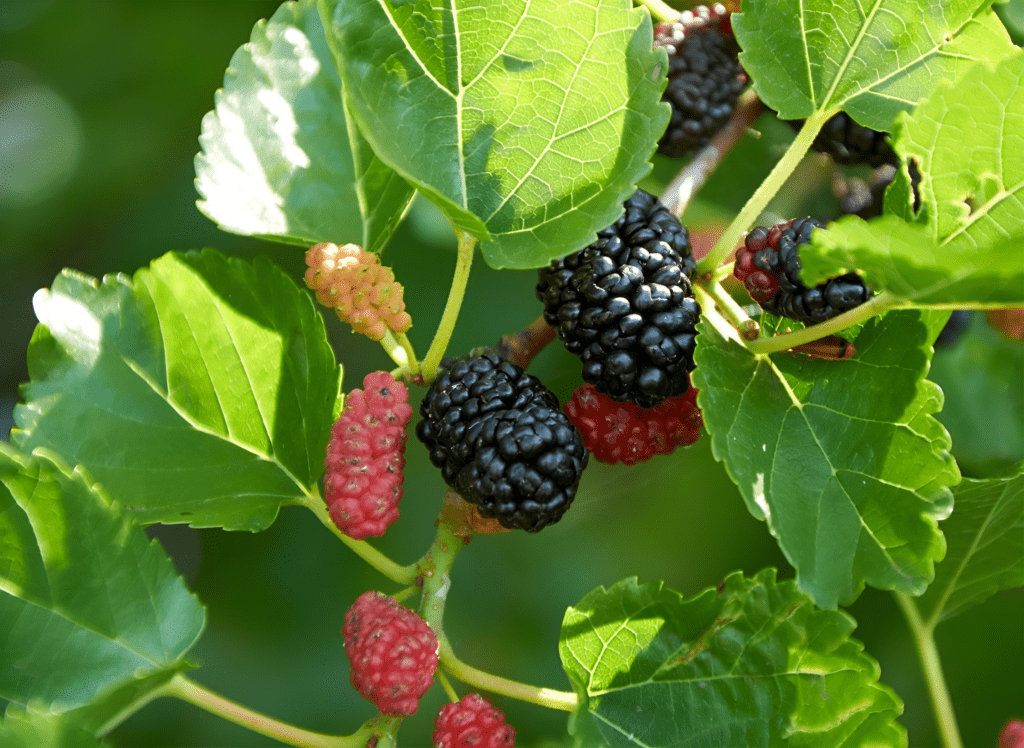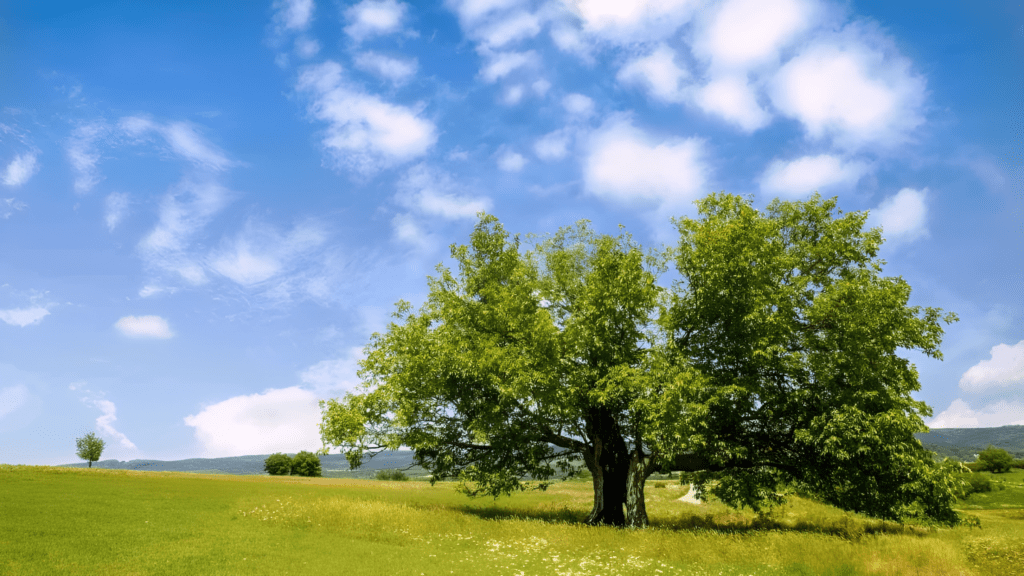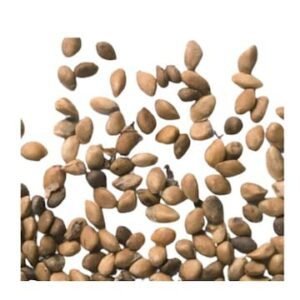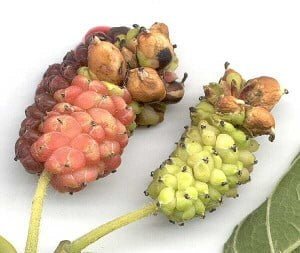berries: definition, how to grow them, diseases, care for them
Introduction to berries
A deciduous tree with serrated and sometimes lobed leaves that are arranged alternately along the stems. The flowers are borne in tight clusters... The fruits ripen to white, pink, red, or purple.
- A rich source of antioxidants, fats, dietary fiber and protein, making it an excellent addition to any balanced diet.
- Berries are exceptionally high in vitamin C, a key nutrient that supports immune function and collagen production.

Basic care guide
Red Mulberry Tree (Morus Rubra): It has rough leaves that have a rough, hairy underside. The berries start out green, and the stem turns purple-red as they mature. Red raspberries grow in the wild
Mulberry tree (Morus Centifolia): It is more like a shrub. It can reach 25 feet in height and has red, purple or black fruits that attract birds and wildlife to your landscape.
Korean Mulberry Tree (Morus australis): This small tree reaches only 20-30 feet at maturity. It has slightly shiny, light green leaves, and the color of its fruits ranges from white to dark purple and red.
Black Mulberry Tree (Morus nigra): Features dark (almost black) berries that are large when mature.
White Mulberry Tree: Common in America.
- Original home
Temperate Asia and North America
- Nickname
Chinese White Mulberry, Common Mulberry, Russian Mulberry, Silkworm Mulberry, Qi Sang, Chin Sang, Mural Blanco

The amount of water needed
Mulberry trees are fairly drought-resistant and have moderate watering needs. While it can tolerate some drought.
The frequency and amount of irrigation required depends on various factors, such as the age of the tree, soil type and climatic conditions. In general, newly planted mulberry trees should be watered deeply once or twice a week during their first growing season to help establish their root system. Mature trees require less frequent watering but may benefit from deep watering every 2-3 weeks during the growing season
It is important to note that overwatering can also harm mulberry trees, as it can lead to root rot and other fungal diseases. To avoid this, ensure proper drainage and avoid watering during periods of heavy rain or excessive moisture
Suitable living conditions
Warm and temperate climate, found in open forests, forest edges, prairies, fields and disturbed areas
Suitable lighting for him:
These trees require plenty of sunlight to thrive, making them a great addition to well-lit, sunny areas. They usually need at least 6-8 hours of direct sunlight per day to produce a healthy, abundant crop. While it can tolerate some shade, insufficient light can result in poor fruit production and overall growth.
It is important to note that the intensity and duration of sunlight can vary depending on the specific cultivar of your mulberry tree. Some varieties, such as white raspberries, can tolerate partial shade, while others, such as black raspberries, require full sun to produce their sweet, flavorful fruit. In addition, young mulberry trees may need a little shade during their first year of growth to avoid excessive heat and sun exposure
Mulberry trees prefer well-drained soil that is rich in organic matter.. They can grow in a range of soil types, including sandy and clay soils, but do best in slightly acidic to neutral soil, with a pH range of 6.0 to 7.0.
Before planting a mulberry tree, it is important to ensure that the soil is prepared appropriately by removing any weeds and amending it with organic matter such as compost...this will help improve the soil structure, increase the availability of nutrients, and promote healthy root growth.
Mulberry trees also have a deep root system and require ample space for root development. It is important to avoid planting them in compacted or poorly drained soil as this may lead to root rot


Find out what light your plants are actually getting.
Find the best locations for them to improve their health, simply using your phone.
Fertilization care
Mulberry trees require regular fertilization to support healthy growth and fruit production. ...They generally benefit from a balanced fertilizer that provides equal amounts of nitrogen, phosphorus and potassium.
It is best to fertilize mulberry trees in early spring, completely, and again in early summer after the fruits have ripened.
Fertilize your mulberry tree once in late winter with a balanced 10-10-10 mixture and measure one pound of fertilizer for every inch of trunk diameter.
How to plant seeds
- Seeds require approximately 90 days of cool, wet stratification, which should begin in mid- or late winter.
-1- Before stratification, the seeds must be soaked in water for 4 days, with the water replaced every two days.
2- For stratification, place the seeds on a damp paper towel, then fold them over. Place it in a resealable bag and place it in the refrigerator. Check it every week or so to make sure the towel stays moist. Remove any seeds that begin to sprout and plant them immediately.
3- Plant them indoors in pots and keep them well moist until the seeds begin to germinate, then reduce the water slightly.
4- Gradually expose it to increasing amounts of sunlight and do not plant outside until the last frost of the season passes
Pruning
If you want to create a comfortable place to sit under, you need to cut away broken, dead or diseased branches. You only need to do this every three years. However, you need to prune the tree every year if you want it to produce fruit. Best is to cut off the ends to help control size to keep the fruit within reach.
The best time to prune your tree is when it is in winter dormancy
- Leafhopper: It is half an inch long and feeds on tree sap. Typically, these pests do not cause serious damage when feeding directly on plants, but they do secrete a liquid on the plants that can cause problems (natural predators such as parasitic wasps are an effective way to control their numbers, and you can also use a little insecticidal soap.)
- Armillaria Root Rot: If your mulberry tree becomes infested with armillaria root rot, it should be dug up and removed from your fruit orchard. Fungicides will not work.)
- Bacterial blight: This bacteria tends to appear when there is poor air circulation around your tree branches and damp foliage. It is possible to prune the branches and save the tree, but if the infestation is severe, the tree will likely need to be moved.
- Popcorn
The strangest diseases of the mulberry tree: the fruits become large and elongated;
You should make sure to pick and dispose of all infected fruits. It spreads easily, so you should make sure you make efforts to stop it. Fortunately, this won't kill your tree, but the fruit will look a bit unsightly.

Suggested use
- The berries can be eaten directly or used in any way such as in pies. Slightly immature fruits are best for making pies
- Unwashed berries can be kept for several days in the refrigerator in a container
- Production of natural dyes for staining wool, silk, carpets and cotton.
- Shade tree
Suitable planting time
April
additional information
- Plant age
Between 25 to 50 years old
- Plant height
40 to 60 feet (13 – 18 m) high
- Flowering stage
The green to white flowers appear in clusters in spring, with male and female flowers found either on the same tree or on separate trees.
- Fruiting stage
3-6 years



